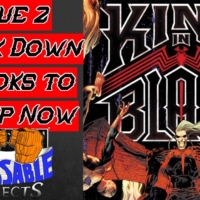How to Stop Panic Attacks Part 3/3
In the previous video we talked about the panic attack cycle, First comes a sensation or feeling. Second, you judge that feeling to be unacceptable, bad, or dangerous.
Then this triggers an escalating fight, flight freeze response and your brain learns that panic and anxiety are dangerous.
So let’s take a deeper look at each step.
Two, the thoughts that transform a physical sensation into something we interpret as dangerous Here are common ways of thinking that trigger panic attacks.
It would be disastrous if I had a panic attack.
It would be awful if my anxiety took over What, if I’m, having a heart attack?
What, if I pass out, If I can just force myself to calm down, this, will all go away?
Why does this always happen to me? The big issue is believing that panic attacks are dangerous.
Now, panic attacks are inconvenient, They’re uncomfortable, They can be embarrassing or they can interfere with what you want to be doing, But they aren’t physically dangerous.
All these uncomfortable symptoms are just the body tossing you into fight-flight-freeze mode, which makes it less likely that you, ‘ll pass out, stop breathing, or any of those other fears. If someone’s having a panic attack and they go to the ER, an EKG will show a regular but rapid heartbeat.
When people worry about passing out, you should know that you pass out with low blood pressure.
A panic attack takes your blood pressure up.
Heart attacks feel worse when you walk around, but when you move around with a panic attack, you feel better Right.
So panic attacks are not dangerous And our society doesn’t help It’s constantly.
Talking about how bad stress is for you and how bad anxiety is for you Now at its root stress is not dangerous, for you, Chronic stress is dangerous, but stress itself, isn’t and neither is fear.
Okay.
Now there are some of you out there right now who are saying, But it could be a heart attack this time.
A panic attack could hurt you.
What about this? One time that I read about this one thing that happened a thousand miles away Right? Well great, Thank you for bringing that up.
That is a perfect example of how the anxious mind is going to highlight the worst-case scenario and kidnap your emotions until you can be 1000 sure of It.
This is the certainty trap that you shouldn’t live your life or take helpful actions until you can 1000 guarantee that nothing bad will ever happen.
There’s so much to be said about the certainty trap.
This is why I don’t have time for it in this video.
I’ll make another video on it, But let me ask you a pragmatic instead of logical question, Okay, So what if there is a one-in-a-million chance that you could die Now? What Do you want to spend the rest of your life, afraid of panic attacks, Or do you want to choose to face life and accept uncertainty and live the life you value, Drive, places See your loved ones, and Hold a job?
You have to choose between living, a life in fear of emotions or a life of acceptance of emotions, So panic attacks, aren’t dangerous.
You can choose to live a rich and meaningful life.
Even if you have some anxiety – or you experience the occasional panic attack, when we fear anxiety when we fear panic attacks, we feed that cycle of fear and panic.
So this is where, if you search for how to stop a panic attack, you get really bad advice. If you have chronic panic attacks, The articles all say: Try to take some deep breaths, Try to calm yourself down, Try to distract yourself.
Look if you’ve tried this and it worked you wouldn’t be here.
This is the exact wrong advice.
Stop trying to calm down your body, because that sends a message to your brain, that the anxiety is dangerous and it must be avoided.
This feeds the fear cycle.
You can learn to calm down.
You can learn to calm your body down, But this is a paradox because something has to come first before change and its acceptance.
So the only way to stop this cycle of panic attacks is to demonstrate to your brain.
That anxiety is not dangerous is to show your brain, that you can feel anxiety and be okay, And the way you do that is willingness.
I’ve talked about this a bunch, but you have to shift your relationship to anxiety. You say Anxiety is uncomfortable, but not dangerous.
This is uncomfortable, but not dangerous.
These body sensations aren’t dangerous.
They’re uncomfortable, So try.
This experiment instead says Fear.
Bring it on Go ahead.
Make me as anxious as possible Or say something like.
I can feel the fear – and do it anyway – It’s impossible to make yourself have a panic attack because the thing that causes them is trying to make them go away.
Okay, Number two make space for your sensations.
If you’re in a death match with your sensations, you might think things like this. I can’t feel this way.
I have to breathe slower.
I have to calm down You’re, essentially telling your brain that these feelings or sensations in your body are dangerous.
This triggers that spiral So instead send the opposite message Open up to your sensations.
Get super curious.
Oh, I wonder what it feels like to breathe fast, Get back in your body, and get present in the moment Notice what you’re feeling and allow it to be.
Be compassionate toward your sensations, even the ones you don’t like Say, Hello, upset stomach It’s.
Okay, You can keep doing that.
If you need to Say Hello, jiggle your legs, what do you feel like right now? What do you need? You can even exaggerate those sensations if you’d, like to Tense your muscles tighter Try to breathe faster Jiggle.
Your legs faster, Just show yourself that you can feel this and be okay. So, instead of trying to calm your body, say It’s.
Okay, to have a fast heartbeat, It’s, okay, to breathe this way, You can create awareness without that negative interpretation.
So when you judge your emotions, you say things like Oh, this has to change.
This is so bad.
This is so dangerous.
This means I’m dying, etc, And when you change your relationship to your feelings, you say This is a feeling.
It is what it is.
I can handle feeling feelings.
Okay, Next, don’t distract yourself.
Don’t leave the situation Stay in it, Because when we avoid anxiety, we reinforce in our brain that anxiety is dangerous. Remind yourself that anxiety, isn’t 39, to dangerous, and that these uncomfortable sensations aren’t dangerous.
They just feel dangerous, but you are safe And ride it out Say something like Bring it on.
When you do this, you demonstrate to your brain that these feelings aren’t dangerous.
They’re uncomfortable, but they’re, not dangerous.
Remember Steve! Back from video number two, He grew up in an abusive home and he learned that emotions were dangerous.
He would have panic attacks over and over again because he was scared of getting anxious or sad, Sometimes in session with Steve.
He would start getting anxious and his wife would lovingly try to calm him down Steve would get afraid that he was going to start feeling anxious and then he’d start freaking out So sometimes in session.
I’d tell him, Steve.
I want you to get as upset as possible right now.
This is important. I need you to get scared of your emotions and get anxious.
Could you please do that And for a moment he’d get emotional and he’d.
Try hard, And then he’d just pause and his breathing would slow down and his face would open up and he’d lift his head and look at me and something would just click And you could see the moment he stopped the struggle Against anxiety, He dropped the rope and this wave of peace came over him.
I think he still felt some weird sensations, but he wasn’t fighting them anymore And the intensity dropped by like 99 Franklin.
Roosevelt said Courage is not the absence of fear, but rather the assessment that something is more important: It’s, okay, to think or feel all sorts of panicky stuff, But that doesn’t mean you have to listen to it or believe it.
This is the paradox of a panic attack To free ourselves from panic.
We need to be willing to have it.
Nick Wignall says Remind yourself that you’re, actually safe Anxiety.
Won’t hurt you.
Your situation is safe. Now, if there is something in your environment, something physical, that’s not safe, like a rattlesnake, let’s say get out of your head: stop trying to change your feelings and take some action to get safe, Otherwise make some space for those feelings.
Stop fighting them.
I’ve got tons of videos on how to do this.
How to feel your feelings, willingness how anxiety and depression are connected and the willingly out-of-breath activity This skill willingness is a skill you can learn.
Let yourself feel your feelings without fighting them Number three don’t believe everything you think.
The third step to stopping future panic attacks is to get good at noticing your panic story So for Steve.
His panic stories were, if I always feel this way, What if I never get better What if this means I’m losing my mind?
The way you tell your story reinforces your brain’s perception of danger, So you need to learn to notice the panic stories that you tell And then just get good at noticing them without buying them noticing them without believing them.
We talked about some of those thoughts earlier It’s, catastrophizing It’s, believing you’re having a heart attack It’s saying: Why does this always happen to me? This is awful.
This is terrible. It’s any sentence, starting with what, if It’s, saying, I can’t handle feeling this way.
Well, what are your choices? You can keep struggling against your feelings and have more panic attacks or you can.
Let yourself feel the anxiety and keep living your life So recognize your thoughts Name, what you’re experiencing.
This is a panic attack.
I’m not actually in danger, I’m, actually safe Or say: Oh hello, there are worry thoughts.
Are you going to tell me that I’m dying again Nice to see you again, but you’re just a cute little catastrophic thought, Just like the boggarts in Harry Potter, fear can’t stand being laughed at If you can’t laugh just Be like Hey there, you little panic thought.
I know what you’re trying to do That’s cool, But I’ve got some other stuff to think about right now, Or you say Right now.
At this moment I’m safe.
Okay.
So back to Steve One day, Steve went to church and he didn’t want to feel anxious that day He didn’t want to get upset or emotional, But as he started to walk in, he started to feel that tightness in his chest. He started to feel the anxiety building up inside of him And at first, he tried to fight it.
He tried to slow his breathing.
He tried to distract himself, but he could feel that panic attack about to blow And in that moment, about six months of therapy.
Finally, clicked for him, He said It felt like a lightbulb clicked on and I suddenly realized that my feelings are just feelings.
They can’t hurt me And he just opened himself up to let himself feel them It’s like he stopped struggling against them and just let himself ride through them while staying at church And when he did they suddenly didn’t have power over Him anymore, He stayed through the whole meeting When he came to session the next week.
He was super excited to tell me It’s, working It’s working.
My feelings are just feelings.
They can’t hurt me And when he’d get really scared, he’d say I’m feeling really scared right now, which is noticing the feeling and making space for it instead of what he used to do, which is say things like.
Will I ever get better? Am I going to feel this way forever? Does this mean I’m losing my mind Now? Sometimes Steve still gets scared of his emotions, but in general, he’s doing so much better.
He’s decreased his panic attacks by like 95, And he’s overall, just doing so much better at letting himself feel his feelings without fighting them. Okay, Number four Panic seems to come from nowhere.
You can’t always predict when panic will come, but you can prepare for it to a degree, So learn to notice your triggers Get better at predicting when you’re going to feel some anxiety or a physical symptom, that way you can prepare yourself To use your new skills instead of trying to avoid or control your anxiety, So don’t try and avoid your triggers.
That tells your brain, that those triggers are more dangerous than they are and makes you panic or anxious.
Worse.
It’s also important to work to decrease anxiety.
So if you imagine anxiety on a scale from 0 to 10, I often see panic attacks in people who are constantly running at this baseline of like 6 or 7 on the scale and small situations that are like a level 1 or a level 2 just pop Them out of okay and into panic So, for example, someone who is extremely stressed out with work and kids and financial problems.
They might have a panic attack from what seems like out of nowhere, But upon careful inspection, it’s, like everything, was just piling up, And then the traffic and being late to pick up the kids, something that’s not normally panic, attack worthy.
That little thing just puts you over the top, So treating anxiety is this combination of changing your relationship with anxiety accepting anxiety and making space for it, and also putting things in your life to do that groundwork to resolve your background.
Stress can make a big difference.
Okay, So just to summarize panic attacks are usually anxiety about anxiety or anxiety about the physical symptoms of anxiety. They spiral out of control when you catastrophize about these symptoms or you try to force them to go away.
If you want to stop having repeated panic attacks, you can learn to accept anxiety as normal, safe, and natural Make space for those uncomfortable situations.
Don’t believe your catastrophic thoughts And take steps to decrease your overall anxiety.
When you take these steps, you’ll show panic that it doesn’t control your life And over time you’ll retrain your brain.
That feelings of anxiety can’t hurt you And the panic attacks will greatly decrease or stop altogether.
Okay, Hope you found this helpful, Thank you for watching, and take care.
Explaindio Agency Edition FREE Training How to Create Explainer Videos & SELL or RENT them! Join this FREE webinar | Work Less & Earn More With Explaindio AGENCY EDITION















